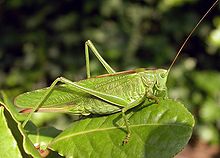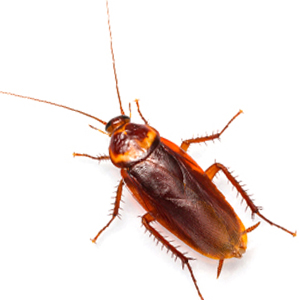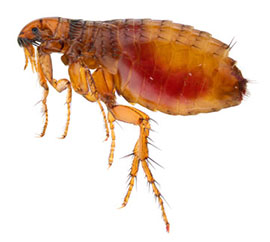Insect Orders Quiz: Trivia! MCQ

.
- 1.
Which order of insects does not undergo complete metamorphosis?
- A.
Diptera
- B.
Lepidoptera
- C.
Orthoptera
- D.
Coleoptera
Correct Answer
C. OrthopteraExplanation
Orthoptera is the correct answer because insects in this order, such as grasshoppers and crickets, do not undergo complete metamorphosis. Instead, they go through an incomplete metamorphosis, where they hatch from eggs as nymphs that resemble miniature adults and gradually grow and molt until they reach their adult form. In contrast, insects in the orders Diptera (flies), Lepidoptera (butterflies and moths), and Coleoptera (beetles) all undergo complete metamorphosis, which includes distinct larval, pupal, and adult stages.Rate this question:
-
- 2.
Butterflies and moths belong to what order?
- A.
Lepidoptera
- B.
Zygentoma
- C.
Hemiptera
- D.
Hymenoptera
Correct Answer
A. LepidopteraExplanation
Butterflies and moths belong to the order Lepidoptera. This order is characterized by insects with large, scaly wings and a coiled proboscis used for feeding on nectar. Lepidoptera includes over 180,000 species, making it one of the most diverse insect orders. Butterflies and moths undergo complete metamorphosis, starting as eggs, then developing into caterpillars, pupae, and finally emerging as adult butterflies or moths. The other options, Zygentoma, Hemiptera, and Hymenoptera, belong to different insect orders and do not include butterflies and moths.Rate this question:
-
- 3.
What is the common name of insects in order to Hemiptera?
- A.
True flies
- B.
True bugs
- C.
Grasshoppers
- D.
Moths
Correct Answer
B. True bugsExplanation
The common name for insects in the order Hemiptera is "true bugs". This order includes insects such as stink bugs, bed bugs, and leafhoppers. These insects have piercing-sucking mouthparts and typically have forewings that are partially hardened at the base and membranous at the tip. The term "true bugs" distinguishes them from other insects that may be commonly referred to as bugs, such as beetles or flies.Rate this question:
-
- 4.
What is an identifying feature of insects in order to Coleoptera?
- A.
Elytra
- B.
Haustellate mouthparts
- C.
Cerci
- D.
Fossorial legs
Correct Answer
A. ElytraExplanation
Elytra are an identifying feature of insects in the order Coleoptera. Elytra are hard, protective wing covers that encase and protect the delicate hindwings of beetles. They serve as a protective shield and provide support during flight. This unique feature distinguishes beetles from other insects and is a key characteristic of the Coleoptera order.Rate this question:
-
- 5.
Name the order of the insect pictured.
- A.
Strepsiptera
- B.
Dermaptera
- C.
Phasmatodea
- D.
Orthoptera
Correct Answer
D. OrthopteraExplanation
The correct order of the insect pictured is Orthoptera. This order includes insects such as grasshoppers, crickets, and katydids. They are characterized by their strong hind legs adapted for jumping and their ability to produce sound by rubbing their wings or legs together. They are herbivorous insects and play important roles in ecosystems as both prey and predators.Rate this question:
-
- 6.
Neuroptera includes which group of insects?
- A.
Antlions
- B.
Crickets
- C.
Cicadas
- D.
Dragonflies
Correct Answer
A. AntlionsExplanation
Neuroptera is a classification of insects that includes antlions. Antlions are a type of insect that belong to the Neuroptera order. They are known for their unique hunting behavior, where they create pit traps in sandy soil to catch their prey. Therefore, antlions are a correct example of an insect group that falls under the Neuroptera classification.Rate this question:
-
- 7.
Order Odonata comprises which groups of insects?
- A.
Honeybees
- B.
Ants
- C.
Damselflies
- D.
Dragonflies
Correct Answer(s)
C. Damselflies
D. DragonfliesExplanation
The correct answer is damselflies and dragonflies. The order Odonata includes these two groups of insects. Damselflies and dragonflies are both part of the same order, but they have some distinct differences. Damselflies are usually smaller and have slimmer bodies, while dragonflies are larger and have bulkier bodies. They also have different wing positions when at rest, with damselflies holding their wings together above their bodies and dragonflies spreading their wings out to the sides. Both groups are known for their ability to fly swiftly and their unique predatory behaviors.Rate this question:
-
- 8.
Name the order of the insect pictured.
- A.
Hymenoptera
- B.
Blattodea
- C.
Psocodea
- D.
Plecoptera
Correct Answer
B. BlattodeaExplanation
The correct answer is Blattodea. Blattodea is the order of insects that includes cockroaches and termites. The picture likely shows an insect that belongs to this order based on its physical characteristics and features. Hymenoptera, Psocodea, and Plecoptera are other orders of insects that are not represented in the given picture.Rate this question:
-
- 9.
Insects in order Embiidina are known as webspinners.
- A.
True
- B.
False
Correct Answer
A. TrueExplanation
The statement is true because insects in the order Embiidina are commonly referred to as webspinners. Webspinners are a group of small, winged insects that are known for their ability to produce silk and construct elaborate silk galleries or webs. These insects use their silk to create protective shelters and to capture prey. They are typically found in tropical and subtropical regions and are known for their unique behavior and appearance.Rate this question:
-
- 10.
Insects in which order have only two wings?
- A.
Hymenoptera
- B.
Trichoptera
- C.
Hemiptera
- D.
Diptera
Correct Answer
D. DipteraExplanation
Diptera is the correct answer because it is the order of insects that have only two wings. Diptera, commonly known as flies, have a unique wing structure where the hindwings are reduced to small balancing organs called halteres. This adaptation allows them to have better maneuverability during flight. Other insect orders mentioned in the options, such as Hymenoptera (bees, wasps, ants), Trichoptera (caddisflies), and Hemiptera (true bugs), have four wings.Rate this question:
-
- 11.
Order Psocodea includes what group of insects?
- A.
Booklice
- B.
Hangingflies
- C.
Fleas
- D.
Thrips
Correct Answer
A. BookliceExplanation
Order Psocodea includes booklice. Psocodea is an order of insects that includes booklice, also known as psocids or barklice. These insects are small, wingless, and often found in damp environments such as books, hence the name "booklice." They feed on organic matter such as mold and fungi. They are not hangingflies, fleas, or thrips, which belong to different insect groups.Rate this question:
-
- 12.
What groups of insects are in order Hemiptera?
- A.
Leafhoppers
- B.
Stinkbugs
- C.
Mantids
- D.
Cicadas
Correct Answer(s)
A. Leafhoppers
B. Stinkbugs
D. CicadasExplanation
The groups of insects in the order Hemiptera include leafhoppers, stinkbugs, and cicadas. Hemiptera is a large order of insects commonly known as true bugs. They are characterized by their specialized mouthparts that form a beak-like structure used for feeding on plant sap. Leafhoppers, stinkbugs, and cicadas all belong to this order and share similar characteristics and adaptations. They are known for their diverse habitats, feeding habits, and unique reproductive behaviors.Rate this question:
-
- 13.
Anisomorpha buprestoides, the twostriped walkingstick, belongs to what order?
- A.
Zoraptera
- B.
Embiidina
- C.
Hemiptera
- D.
Phasmatodea
Correct Answer
D. PhasmatodeaExplanation
The correct answer is Phasmatodea. Anisomorpha buprestoides, also known as the twostriped walkingstick, belongs to the order Phasmatodea. This order consists of insects commonly known as stick insects or walking sticks. They are characterized by their long, slender bodies and ability to camouflage themselves as twigs or branches. Phasmatodea is a diverse order with over 3,000 known species found worldwide.Rate this question:
-
- 14.
Silverfish belong to order Thysanoptera
- A.
True
- B.
False
Correct Answer
B. FalseExplanation
Silverfish do not belong to order Thysanoptera. They actually belong to order Zygentoma. Thysanoptera is the order that includes insects known as thrips, not silverfish. Therefore, the correct answer is False.Rate this question:
-
- 15.
Insects in order Dermaptera are commonly known as what?
- A.
Earwigs
- B.
Carpenter bees
- C.
Twisted-wing parasites
- D.
Termites
Correct Answer
A. EarwigsExplanation
Earwigs are commonly known as insects in the order Dermaptera. They are characterized by their elongated bodies and pincer-like appendages at the rear. Earwigs are often associated with the myth that they crawl into people's ears, hence the name "earwigs." However, this is not true. Earwigs are primarily nocturnal and feed on decaying plant material, insects, and other small organisms. They are found worldwide and are known for their distinctive appearance and behavior.Rate this question:
-
- 16.
Which insect order is most likely to be found near freshwater streams?
- A.
Blattodea
- B.
Ephemeroptera
- C.
Orthoptera
- D.
Siphonaptera
Correct Answer
B. EphemeropteraExplanation
Ephemeroptera is the correct answer because this insect order, commonly known as mayflies, is often found near freshwater streams. Mayflies have aquatic larvae that live in freshwater and emerge as adults to mate and lay eggs near the water. They are highly adapted to freshwater habitats and are an important part of the stream ecosystem. Blattodea (cockroaches), Orthoptera (grasshoppers and crickets), and Siphonaptera (fleas) are not typically associated with freshwater streams.Rate this question:
-
- 17.
Order Hymenoptera includes which groups of insects?
- A.
Termites
- B.
Bees
- C.
Ants
- D.
Wasps
Correct Answer(s)
B. Bees
C. Ants
D. WaspsExplanation
The order Hymenoptera includes bees, ants, and wasps. These groups of insects are all part of the same taxonomic order due to their similar characteristics and evolutionary history. They are all social insects that live in colonies and have specialized roles within their colonies. Bees are known for their role in pollination and honey production, ants are known for their complex social structures and organized behavior, and wasps are known for their ability to sting and their predatory nature.Rate this question:
-
- 18.
Which orders are mostly predatory as adults?
- A.
Ephemeroptera
- B.
Mantodea
- C.
Odonata
- D.
Trichoptera
Correct Answer(s)
B. Mantodea
C. OdonataExplanation
Mantodea and Odonata are mostly predatory as adults. Mantodea, also known as praying mantises, are known for their predatory behavior, capturing and feeding on insects. Odonata, which includes dragonflies and damselflies, are also predatory as adults, feeding on other insects, such as mosquitoes and flies. Both of these orders have adaptations and hunting strategies that make them efficient predators.Rate this question:
-
- 19.
Order Blattodea includes which groups of insects?
- A.
Termites
- B.
Ants
- C.
Beetles
- D.
Cockroaches
Correct Answer(s)
A. Termites
D. CockroachesExplanation
The order Blattodea includes termites and cockroaches. Termites are social insects known for their ability to break down cellulose in wood, while cockroaches are resilient insects that can survive in various environments. Ants and beetles, although also insects, belong to different orders (Hymenoptera and Coleoptera, respectively) and are not included in the order Blattodea.Rate this question:
-
- 20.
In which order are you most likely to see insects with saltatorial legs?
- A.
Coleoptera
- B.
Ephemeroptera
- C.
Diptera
- D.
Orthoptera
Correct Answer
D. OrthopteraExplanation
Insects with saltatorial legs are those that have adapted for jumping or leaping. Orthoptera is the order of insects that includes grasshoppers, crickets, and locusts, which are well-known for their ability to jump using their strong hind legs. Therefore, it is most likely that you will see insects with saltatorial legs in the order Orthoptera.Rate this question:
-
- 21.
The insect pictured belongs to which order?
- A.
Psocodea
- B.
Coleoptera
- C.
Siphonaptera
- D.
Hymenoptera
Correct Answer
C. SiphonapteraExplanation
The correct answer is Siphonaptera. Siphonaptera is the order that includes fleas. The insect in the picture likely belongs to this order because it has a flattened body, long legs adapted for jumping, and mouthparts specialized for piercing and sucking blood. These characteristics are typical of fleas, which are notorious ectoparasites that feed on the blood of mammals and birds. Psocodea is the order that includes lice, while Coleoptera is the order that includes beetles, and Hymenoptera is the order that includes bees, wasps, and ants.Rate this question:
-
- 22.
Which orders are hexapods but not true insects?
- A.
Collembola
- B.
Protura
- C.
Dermaptera
- D.
Mecoptera
Correct Answer(s)
A. Collembola
B. ProturaExplanation
Collembola and Protura are both orders of hexapods that are not true insects. Hexapods are characterized by having six legs, which both Collembola and Protura possess. However, they differ from true insects in various ways, such as their body structure and lack of wings. Dermaptera and Mecoptera, on the other hand, are orders of insects and do not fit the criteria of being hexapods but not true insects.Rate this question:
-
- 23.
Which order are you least likely to find in Florida?
- A.
Diptera
- B.
Ephemeroptera
- C.
Grylloblattidae
- D.
Odonata
Correct Answer
C. GrylloblattidaeExplanation
Grylloblattidae is the least likely order to be found in Florida. This is because Grylloblattidae, also known as rock crawlers, are primarily found in cold, mountainous regions. Florida's warm and tropical climate does not provide the suitable habitat for these insects. On the other hand, Diptera (flies), Ephemeroptera (mayflies), and Odonata (dragonflies and damselflies) are commonly found in Florida due to the presence of wetlands and diverse ecosystems.Rate this question:
-
Quiz Review Timeline +
Our quizzes are rigorously reviewed, monitored and continuously updated by our expert board to maintain accuracy, relevance, and timeliness.
-
Current Version
-
Oct 09, 2023Quiz Edited by
ProProfs Editorial Team -
May 14, 2018Quiz Created by
GLaTora





